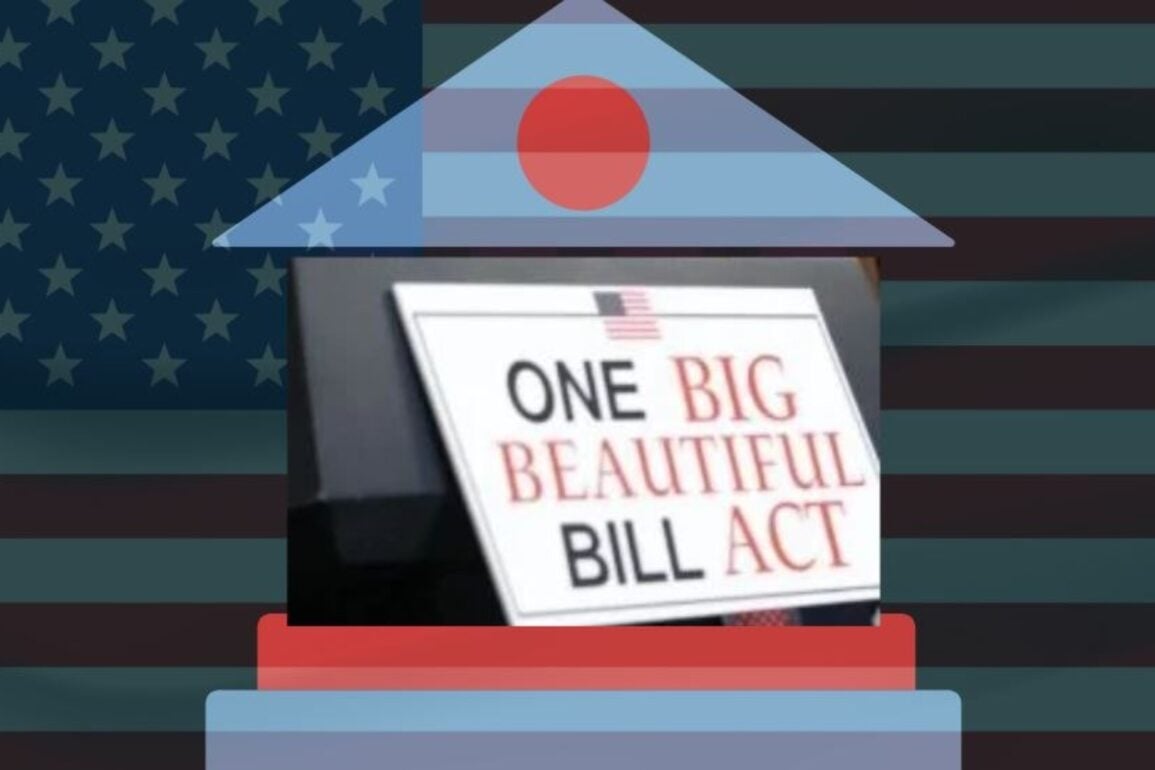- The Big Beautiful Bill is a massive fiscal overhaul, blending tax cuts, spending hikes, and policy tweaks designed to juice the U.S. economy.
Bigger, more beautiful, and billier than anything that’s gone before, America’s giant fiscal package is now the law of the land courtesy of President Trump’s signature. The Big Beautiful Bill has sparked fireworks beyond the Fourth of July celebrations, stirring up debates from Wall Street to Silicon Valley. While critics decry it as a debt-fueling monster, crypto enthusiasts are eyeing it as a potential catalyst that could supercharge digital assets.
Technically, it could be both. Technically it could be neither. So where does the truth lie? What are the real benefits and effects of this fiscal juggernaut on the crypto world? Proponents believe it could finally tip the scales toward mainstream adoption, while others believe its effects have been overstated and that it’s just another macroeconomic ripple. They can’t both be right…right? Let’s unpack it and see what the BBB means for BTC and the rest of the cryptoconomy.
Go Big or Go Home
At its core, the Big Beautiful Bill is a massive fiscal overhaul, blending tax cuts, spending hikes, and policy tweaks designed to juice the U.S. economy. There are extensions of the 2017 tax breaks for corporations and individuals, sweetened deductions for state and local taxes, and a hefty injection into military spending including the notorious “Golden Dome” missile defense initiative. All told, estimates peg the added national debt at anywhere from $3.3 trillion to $5 trillion over the next decade. On the surface, all this seems worlds away from blockchain and Bitcoin. What’s a missile shield got to do with a decentralized digital currency network, after all? Dig a little deeper, however, and the connections start to fuse.
The main reason why crypto should be monitoring the bill’s effects closely is because its emphasis on fiscal stimulus could erode the dollar’s purchasing power through increased government borrowing and spending. That’s where crypto shines as a hedge since assets like Bitcoin aren’t beholden to central banks or inflationary policies. As debt piles up, investors often flock to alternatives that preserve value, and history backs this up. Think back to post-2008 quantitative easing or the COVID-era stimulus: each time the money supply ballooned, Bitcoin’s appeal as “digital gold” grew stronger.
One voice who’s very much onside with this interpretation is Andrei Grachev, Managing Partner at DWF Labs, who sees the bill as a signal of shifting tides, venturing: “We believe that this legislative development indicates changing expectations around market liquidity. Should fiscal stimulus accelerate, Bitcoin and other digital currencies could attract increased investment capital. This is because historical patterns have shown us expansive government expenditure tends to diminish fiat currency strength, which in turn prompts investors to seek alternative value preservation assets.”
The flipside to this, of course, is that the bill is designed to stimulate the U.S. economy – not stunt it. Its architects didn’t devise this spending extravaganza because they want to sink the country deeper into the quagmire of debt: they genuinely think it will prove a net good for the country’s economy, sparking growth that exceeds the eye-watering rate of fed spending. If the bill does spark inflation, however, crypto could benefit from a flight to quality, drawing in institutional money that’s been sitting on the sidelines.
On this point, Andrei Grachev adds: “From our perspective at DWF Labs, this represents a possible turning point for institutional crypto investment strategies. Mainstream fund managers are now closely monitoring macroeconomic indicators such as government spending policies, interest rate trends, and international tensions when evaluating digital asset allocations. Policy developments have evolved from peripheral considerations to core factors influencing capital distribution across all asset categories, crypto included.”
Weighing the Wins and the Wild Cards
A weaker dollar from rising debt could elevate Bitcoin’s role as a global reserve asset. We’ve already seen gold surge 28% this year amid similar fiscal worries – why wouldn’t its digital counterpart follow suit? Bitcoin has held steady through recent geopolitical jitters, like all those Middle East flare-ups, proving its resilience. The bill’s tax cuts could also free up capital for high earners and businesses, creating a “risk-on” vibe where speculative investments like crypto thrive. It’s easy to see corporations with far fatter bottom lines than any DeFi whale dipping their toes into Ethereum or stablecoins for treasury management. This is already occurring, but the fallout from the Big Beautiful Bill could accelerate that trend.
In the short-term, this influx of liquidity might benefit all digital assets, including altcoins and DeFi governance tokens, as consumers and investors feel flush. Longer-term, if inflation bites, crypto’s non-correlated nature becomes a glowing orb, attracting pensions and endowments that once viewed it as too volatile but that are now lured to its light like moths. But even if these players do enter the crypto arena, they won’t be doing so to pump your bags. Smaller tokens are likely to get overshadowed by blue-chip cryptos like BTC, and regulatory scrutiny could intensify if the bill’s debt spiral prompts calls for tighter controls on “speculative” assets.
Of course, nothing’s guaranteed. In an ideal world, the bill ignites economic growth without runaway inflation, channeling fresh capital into crypto innovation, from RWAs to AI. In a darker timeline, it exacerbates divides, with rising inflation dampening investor enthusiasm for speculative assets such as crypto. Yet, as Grachev hints, policy like this is forcing even traditional finance to rethink allocations, and with little evidence to suggest any U.S. administration is serious about tackling debt, the money printer looks poised to run and run.
It could prove to be a nothing burger. Or the Big Beautiful Bill might just prove that in an era of endless spending, the smartest money is on assets that can’t be printed away.
This article was originally published on InvestingCube.com. Republishing without permission is prohibited.


